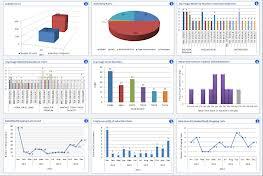
Business Intelligence is the latest technology that promises to revolutionize the way management can have a pulse on their business. Today’s businesses are awash in data generated from all types of sources at the fastest rate in the history. Majority of businesses cannot keep up with this so called Big Data and simply don’t understand what to do with it. No doubt this data holds lot of valuable insight and can help businesses make the right decision at the right time. The problem is finding that needle in this haystack. This is where business intelligence tools come into picture. Companies are investing large sums of money in these tools. When used properly these tools can provide succinct reports that can managers gain insights make quick decisions.
However, many companies fail to get true benefits of these tools. The managers still receive employee emails that have spreadsheet attachments with loads of data. When you walk around the office, you still see sales team typing their sales data in Excel. Now, you can always hire business intelligence consulting services to try to figure out the problem. Before you make that call though, get to the bottom of the problem. If you can articulate your problem to them, the consultants’ work will be more effective. Consider these six reasons why your team might not be making the transition.
Reason 1: You designed your BI solution for power users, not everyday ones
The goal of BI software should be to get all employees to use it. However, if you chose the flashiest, most over-engineered solution on the market, your employees may feel that it is unapproachable. Most of them probably just want to login to the BI dashboard, run reports and do simple data analysis. They don’t require nor want all of the shiny knobs and in-depth tools that your power users crave.
Reason 2: Your BI tools aren’t flexible enough to meet different employee needs
Your BI tools were configured for power users only. You can certainly keep that configuration as long as the tool can flex to accommodate everyday users as well. Instead of just producing simple reports, today’s BI tools include multiple dashboards, ad hoc querying, self-service, scorecards, data visualization, data analytics, visual analytics and on and on — you get the picture. Find the balance between giving your employees many options and overwhelming them with choices.
Reason 3: Your users have no idea what they want
You asked the employees what they wanted in a BI solution. Then, you incorporated their feedback, and you showed them the demo. They loved everything – except now they won’t use the software. In reality, your employees may not have known the business rationale behind the BI software, so they either told you what you wanted to hear or they picked the package that seemed snazziest at the time. Go back to the drawing board and roll out features one at a time. Explain the business rationale, let the employees test drive the solution and respond to their feedback one feature at a time.
Reason 4: You thought self-service equaled low-maintenance
Unfortunately, that’s not the case. Employees often need more support when dealing with self-service solutions. Also, you still have to produce high-quality data that is complete and consistent before they can even begin analysis. You can’t just toss your workers the keys to BI tools and leave them to figure the system out for themselves.
Reason 5: You gave IT control over report creation
It sounded like a good idea at the time to let IT control all of the reporting. After all, such a setup would create consistency and quality. In most cases, however, IT department does not have time to be a report factory. They have to focus on network uptime, security, applications, mobile device management and many other items of business.
Reason 6: You thought that your BI tools would render Excel extinct
Some workers can’t make the transition you are asking them to make. They’ve used spreadsheets for years, they’ve taken training to learn how to make pivot tables and no new-fangled BI tool is going to change their entire routine. You have to accept spreadsheets, but put limits on their use. For example, let employees use them for personal review and analysis, but not for any kind of deep business analytics. An exception would be to use the spreadsheet as a front-end database tool, which would create an “enterprise spreadsheet.”
You will never be able to eliminate those cursed spreadsheets, but you can lessen their use by persuading employees — and training them adequately — to use your BI solution. Make sure that it is simple enough to meet their needs without limiting the options of your superstar users. Also, expect to support your workers as they learn, and take the rollout process slowly. A BI consultant can help you introduce new protocols to your staff. This is an upfront investment that will pay off significantly.






